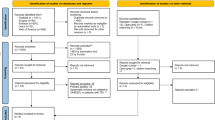Abstract
Aim This systematic review and meta-analysis aimed to synthesise the current evidence for the association of oral piercings with oral complications.
Data sources Research published before January 2022 was identified from the Cochrane Library, Virtual Health Library, Web of Science, Scopus, PubMed, Embase, Google Scholar and OpenGrey databases. Experts in the field were approached via email to request access to relevant ongoing studies and unpublished results.
Study design Two independent reviewers determined the eligibility of studies based on the predefined inclusion criteria. Where the outcome was unclear, a third reviewer was consulted to reach consensus. Using the Joanne Briggs institute criteria for critical appraisal, 15 studies achieved good methodological quality.
Meta-analysis was conducted to determine the event rate of gingival recession and damage to teeth in participants with oral piercings and to determine odds ratios of these outcomes in participants with oral piercings compared to those without.
Results In total, 54 studies published between 2000-2021 met the inclusion criteria, providing a total sample of 27,963 piercings covering various anatomical sites: tongue (39 studies), lip (29 studies) and other sites, such as oral frenula or cheek (11 studies).
Meta-analysis showed that there was a 34% prevalence of dental fracture (DF) in participants with oral piercings and this was 34% for tooth wear, 33% for gingival recession (GR), 27% for non-specified dental damage and 22% for tooth chipping. A significant association was found between oral piercings and the presence of GR and DF, with a seven-fold and three-fold increased risk, respectively, when an oral piercing was present. Reporting bias was not observed and evidence certainty for these outcomes was low.
Conclusions The presence of oral piercings is associated with an increased risk of gingival recession and dental fracture.
This is a preview of subscription content, access via your institution
Access options
Subscribe to this journal
Receive 4 print issues and online access
$259.00 per year
only $64.75 per issue
Buy this article
- Purchase on Springer Link
- Instant access to full article PDF
Prices may be subject to local taxes which are calculated during checkout
Similar content being viewed by others
References
Moola S, Munn Z, Tufanaru C et al. Systematic reviews of aetiology and risk. In Aromataris E, Munn Z (eds) JBI Manual for Evidence Synthesis. Adelaide: Joanna Briggs Institute, 2020.
Author information
Authors and Affiliations
Ethics declarations
The authors declare no conflicts of interest.
Rights and permissions
About this article
Cite this article
Offen, E., Allison, J. Do oral piercings cause problems in the mouth?. Evid Based Dent 23, 126–127 (2022). https://doi.org/10.1038/s41432-022-0816-z
Received:
Accepted:
Published:
Issue Date:
DOI: https://doi.org/10.1038/s41432-022-0816-z



